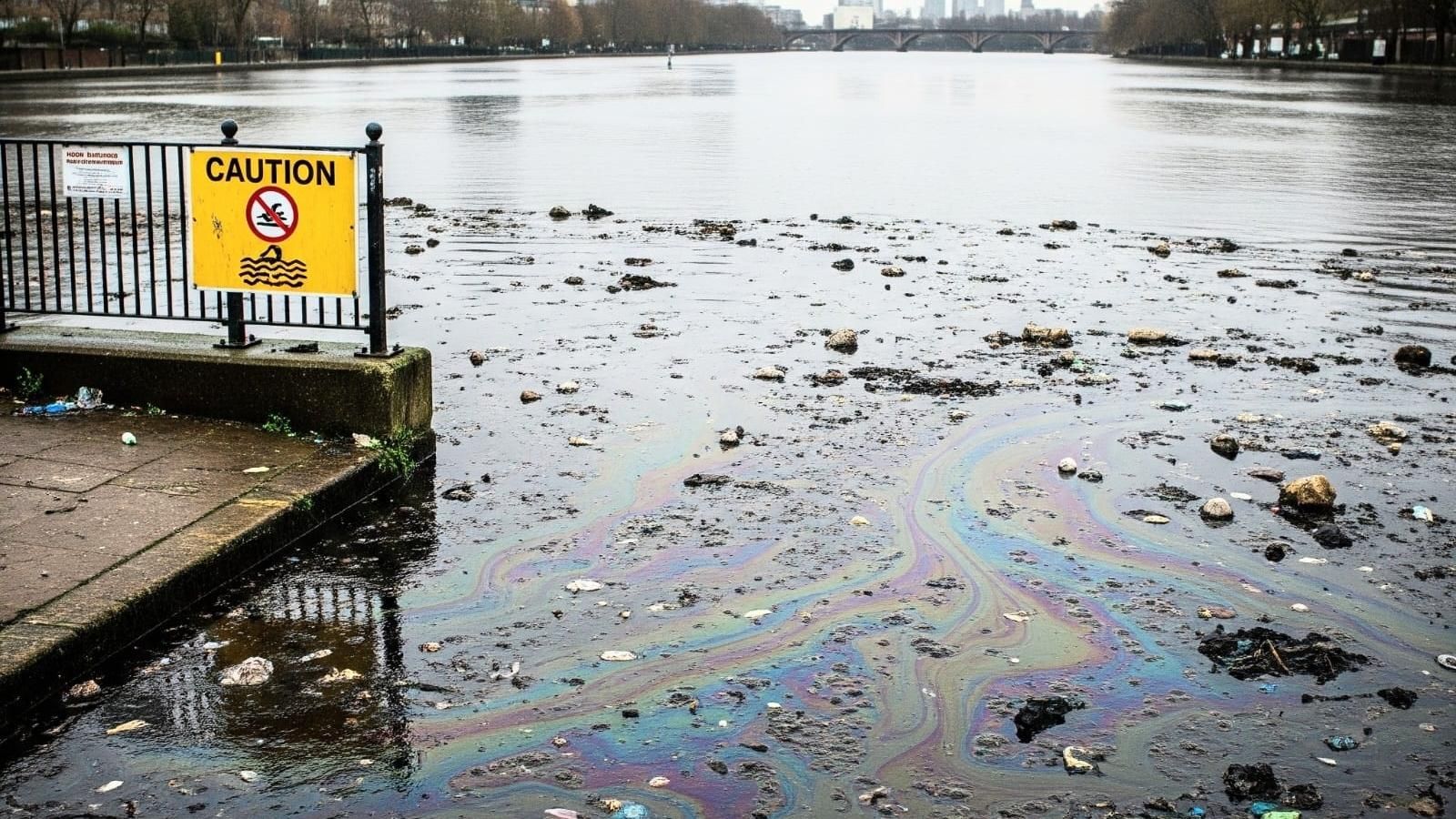A alarming new report has revealed a staggering increase in dangerous bacteria levels at some of London's most beloved outdoor swimming locations, raising serious public health concerns as wild swimming continues to surge in popularity. Research indicates a colossal 1,188.8% surge in E. coli at Hyde Park’s Serpentine Lido between 2023 and 2024, while Hampstead Heath’s mixed pond also saw a significant 230% increase in the same period.
E. coli, a bacteria commonly found in human and animal intestines, can cause a range of debilitating symptoms including diarrhoea, stomach cramps, and fever, and in severe cases, can lead to kidney failure. The analysis, conducted by the Bathing Mobility Advisory Service (BMAS), shows that the Serpentine Lido's E. coli count soared from 45 in 2023 to 580 in 2024. Worryingly, figures indicating faecal contamination in the water also spiked by an astonishing 1,085% during this time.
This unsettling data emerges against a backdrop of increasing public enthusiasm for wild swimming, a trend that gained considerable traction during the Covid-19 pandemic. However, this growing popularity has been shadowed by escalating concerns over the safety of the UK's increasingly polluted waterways.
Despite the dramatic rise in E. coli and faecal contamination, the Serpentine Lido has remarkably been rated as "Sufficient" by the Environment Agency, meaning it meets the minimum standard required for bathing water. This seemingly contradictory assessment has fueled public anger and renewed calls for more stringent water quality monitoring and regulations.
In response to widespread public outcry, the government earlier this year announced reforms to bathing water regulations. These changes include adjustments to designation criteria for future sites, more flexible bathing seasons, and an expansion of the legal definition of "bather" – a move intended to provide clearer guidelines and potentially broaden the scope of monitored areas.
The Environment Agency has stated its commitment to monitoring water quality, planning to take over 7,000 samples at 451 designated bathing sites across England throughout this year's season. Results from these laboratory tests will be promptly uploaded to Swimfo, an online platform designed to help the public make informed decisions about where to swim. Ultimately, these results will be used to classify the quality of each site as “excellent”, “good”, “sufficient”, or “poor” at the end of the season.
However, experts like Professor Davey Jones, a soil and environmental scientist at Bangor University, are advocating for even more rigorous testing. He stressed the critical need for routine monitoring of all pathogens in water, particularly viruses, which are currently not routinely tested for. "They’re one of the biggest threats to human health," Professor Jones warned. "Some pathogens, like E. coli O157, can enter groundwater through agricultural run-off and pose serious health risks, even in small amounts. As recreational water use increases, especially in urban settings like London, it’s vital we broaden our testing frameworks to include viral contaminants.”
Amelia Hornsby of BMAS underscored the broader implications of their findings. "Water quality is a key indicator of environmental health and public safety," she commented. "Consistently high standards are essential not only for protecting ecosystems, but also for ensuring safe and enjoyable access to our natural waters for local communities and visitors alike." The recent findings serve as a stark reminder of the delicate balance between recreational enjoyment and environmental responsibility, urging immediate and comprehensive action to safeguard public health in London’s cherished outdoor spaces.
Health Care Advice: Staying Safe While Wild Swimming
Given the concerns about water quality, here are some essential health care tips for anyone considering wild swimming:
Check Water Quality Information: Before you swim, always check the latest water quality information for your chosen spot. Use resources like the Environment Agency's Swimfo website, which provides up-to-date data on designated bathing sites.
Observe the Water: Look for visual signs of pollution. Avoid swimming in water that looks murky, has a strong unpleasant smell, or contains obvious debris, litter, or algal blooms.
Avoid Swimming After Heavy Rain: Heavy rainfall can wash pollutants, including sewage overflow and agricultural runoff, into waterways, significantly increasing bacteria levels. It's best to wait at least 24-48 hours after heavy rain before swimming.
Cover Open Wounds: Do not enter the water if you have any open cuts, sores, or infections. These can provide an entry point for bacteria into your bloodstream.
Avoid Swallowing Water: Try to avoid swallowing any water while swimming. This is one of the primary ways harmful bacteria like E. coli enter your system.
Shower Thoroughly Afterwards: Always shower thoroughly with soap and clean water as soon as possible after swimming in natural waters. Pay particular attention to washing your hands before eating.
Wash Swimwear: Wash your swimwear and any equipment used in the water with hot water and detergent to remove any residual bacteria.
Be Aware of Symptoms: If you experience symptoms such as diarrhoea, stomach cramps, fever, or vomiting after swimming, seek medical attention promptly and inform your doctor about your recent wild swimming activity.
Consider Local Advice: Pay attention to any local signage or advice regarding water conditions. These are usually in place for your safety.
_1.jpg)
_1.jpg)
_2.jpg)





.svg)


